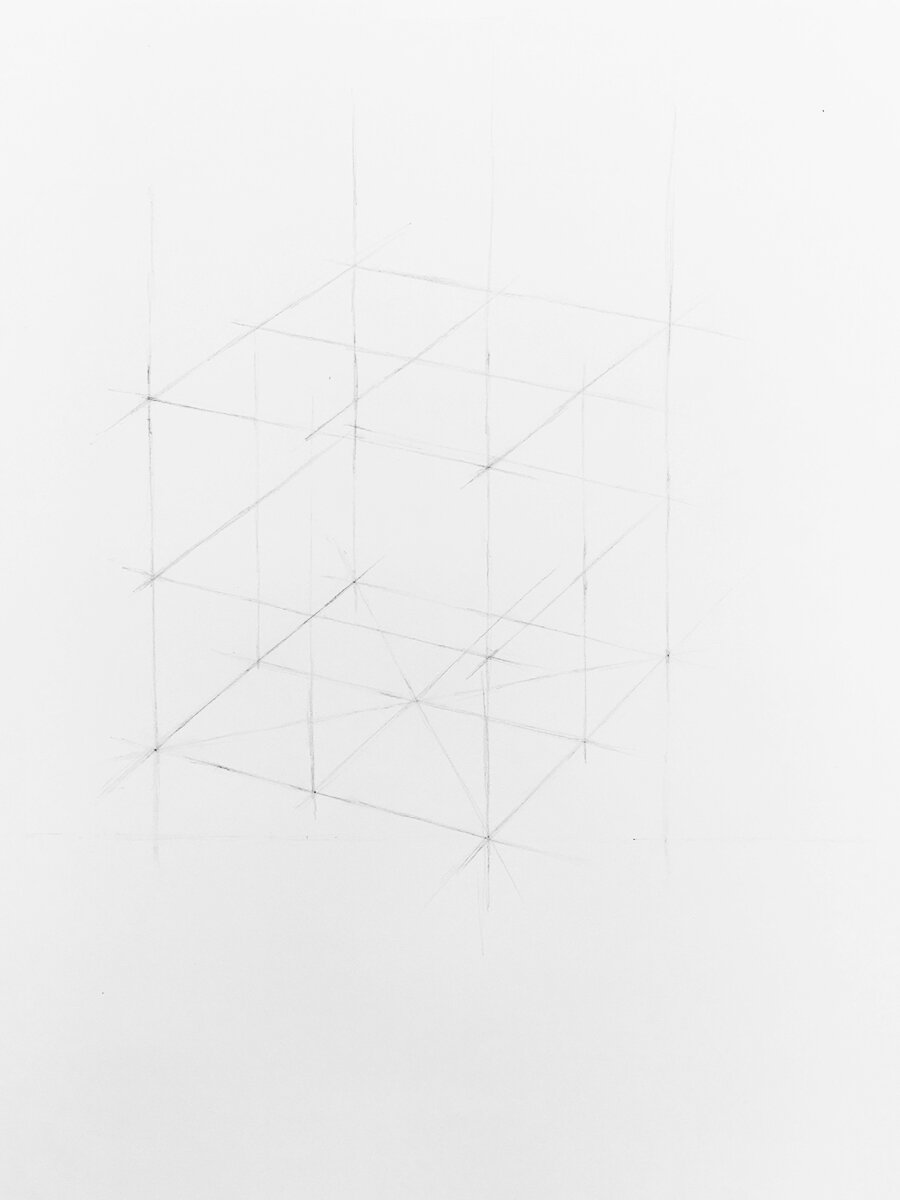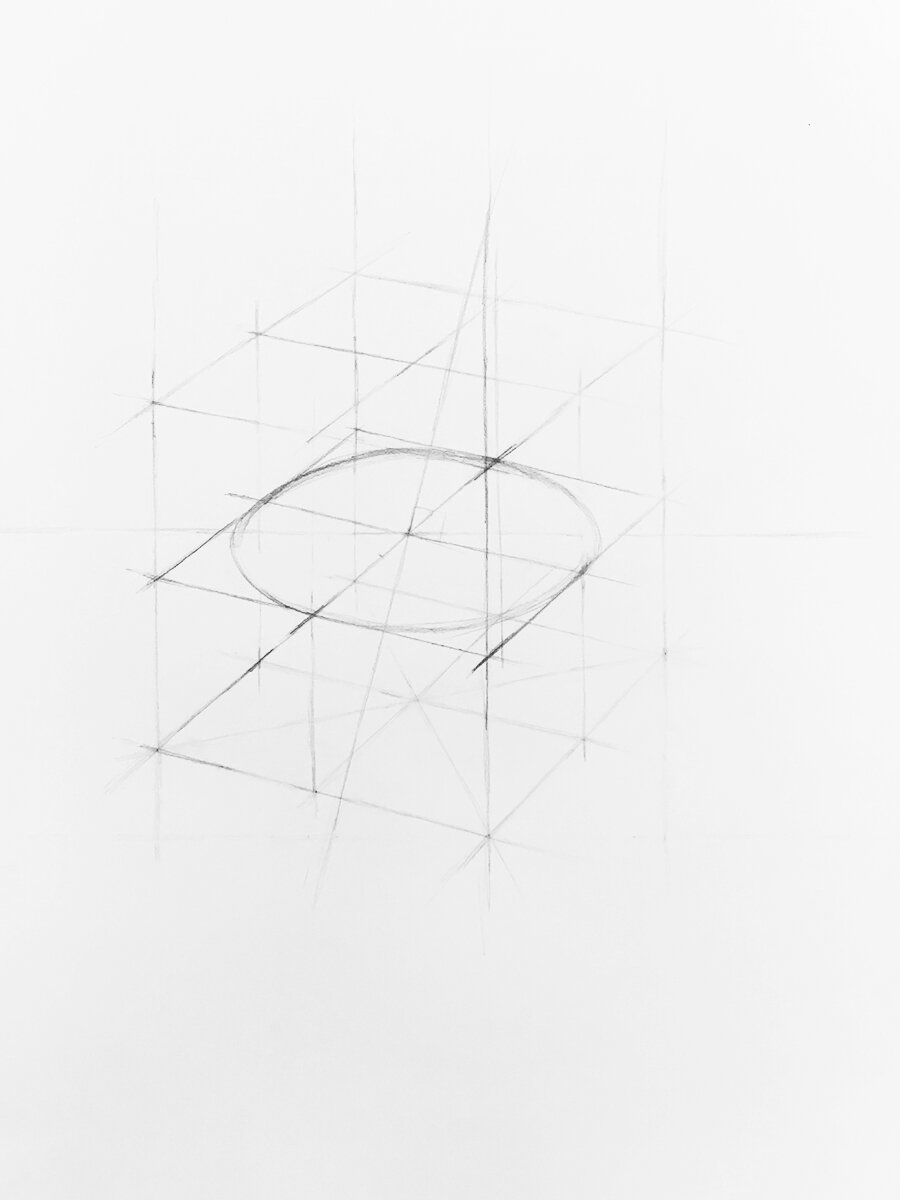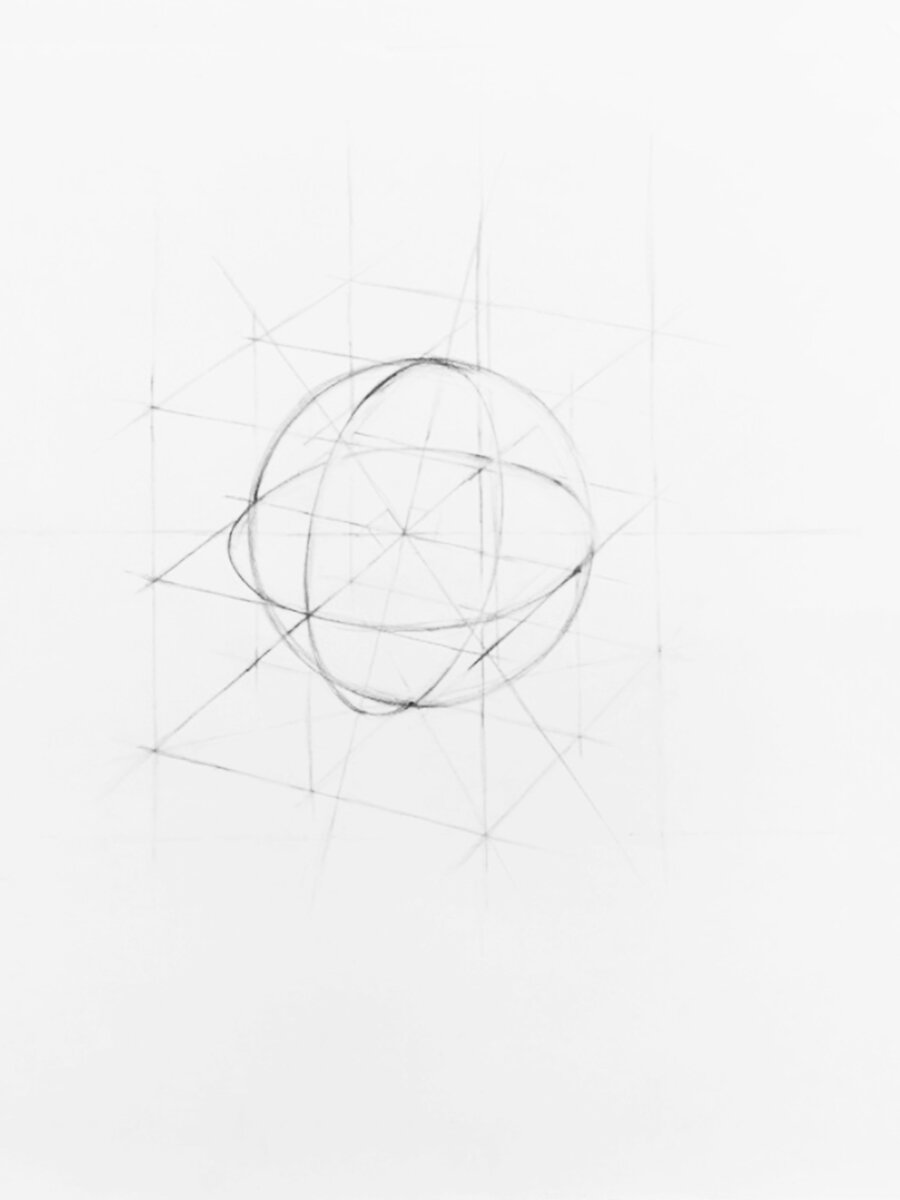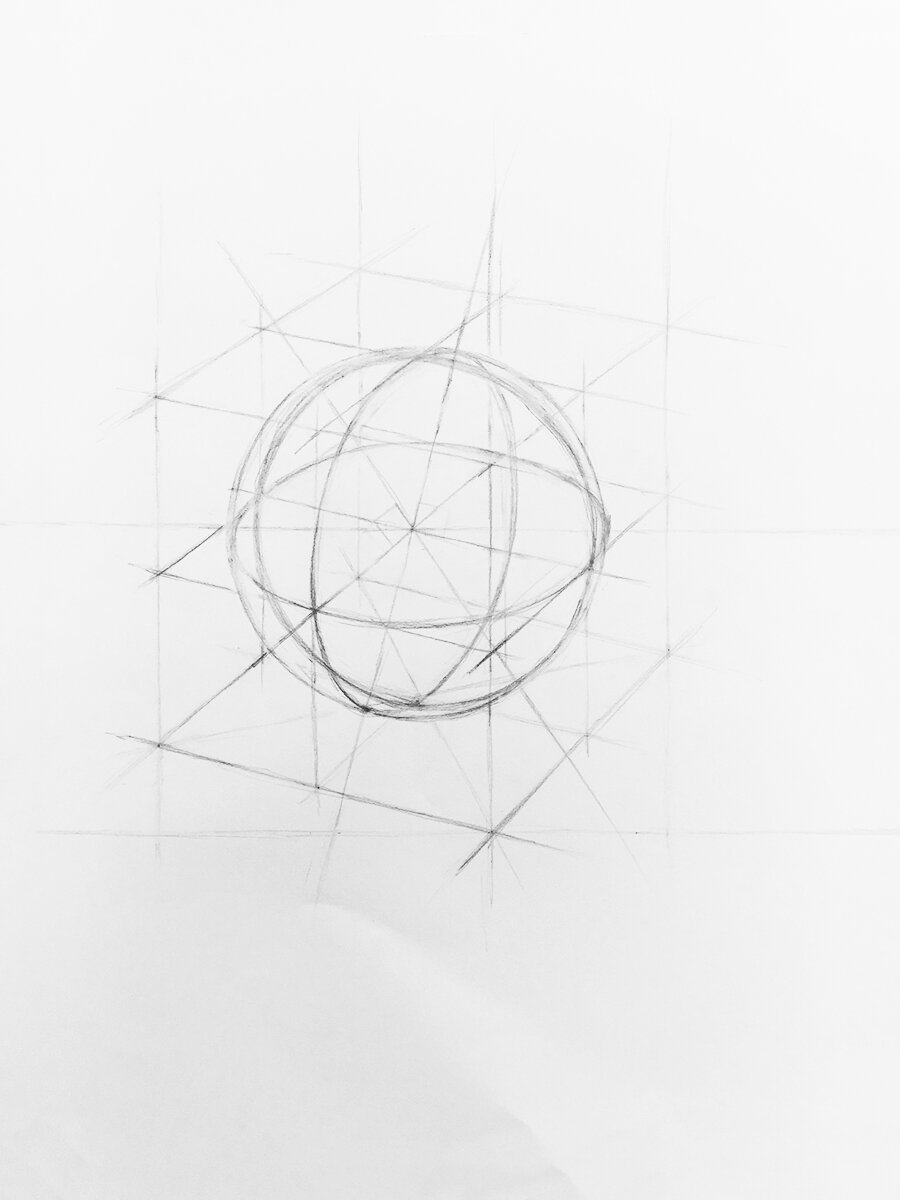Complex Object Drawing
Drawing is a language to explore and communicate ideas. And the development of drawing is an essential process for design thinking.
This project was awarded Design Excellence at the Herberger Institute for Design and the Arts at Arizona State University for the class Design Drawing I (GRA 220) in the fall of 2018.
2B Pencil / Illustrator / Photoshop
18 x 24 inches
The Challenge
Practicing the technical skills of graphic design goes just beyond sessions at the computer. Refining hand eye coordination with a pencil (...yes an actual pencil!) and not a mouse is essential to understand the relationships of proportion and perspective. Drawing can also be thought of as an indication. I was constantly challenged in these exercises to ask, how much information was necessary when translating an object into a drawing or painting. Exploring varying amounts of form in relation to space helped me translate my ideas and existing forms into the language of drawing.
Process









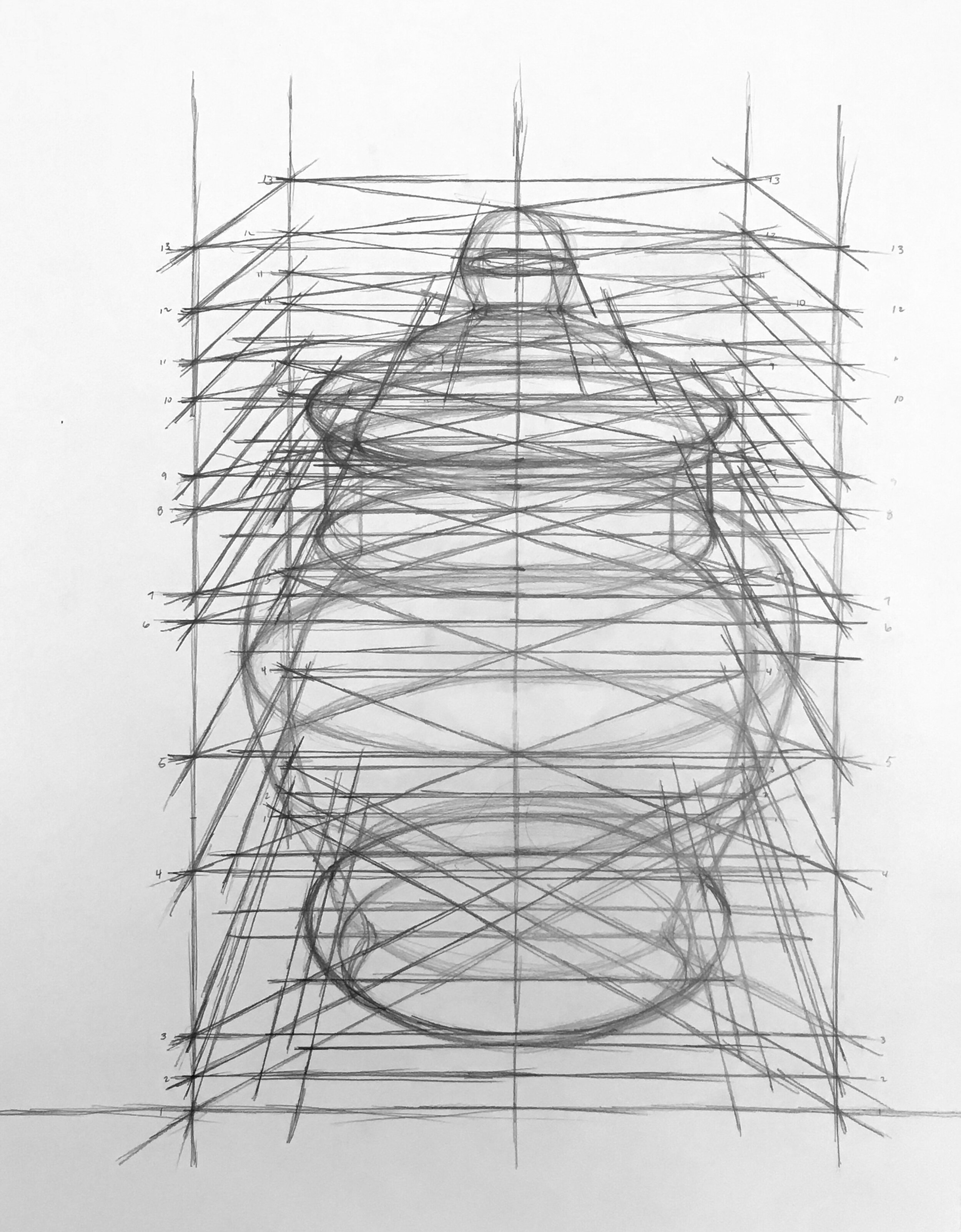
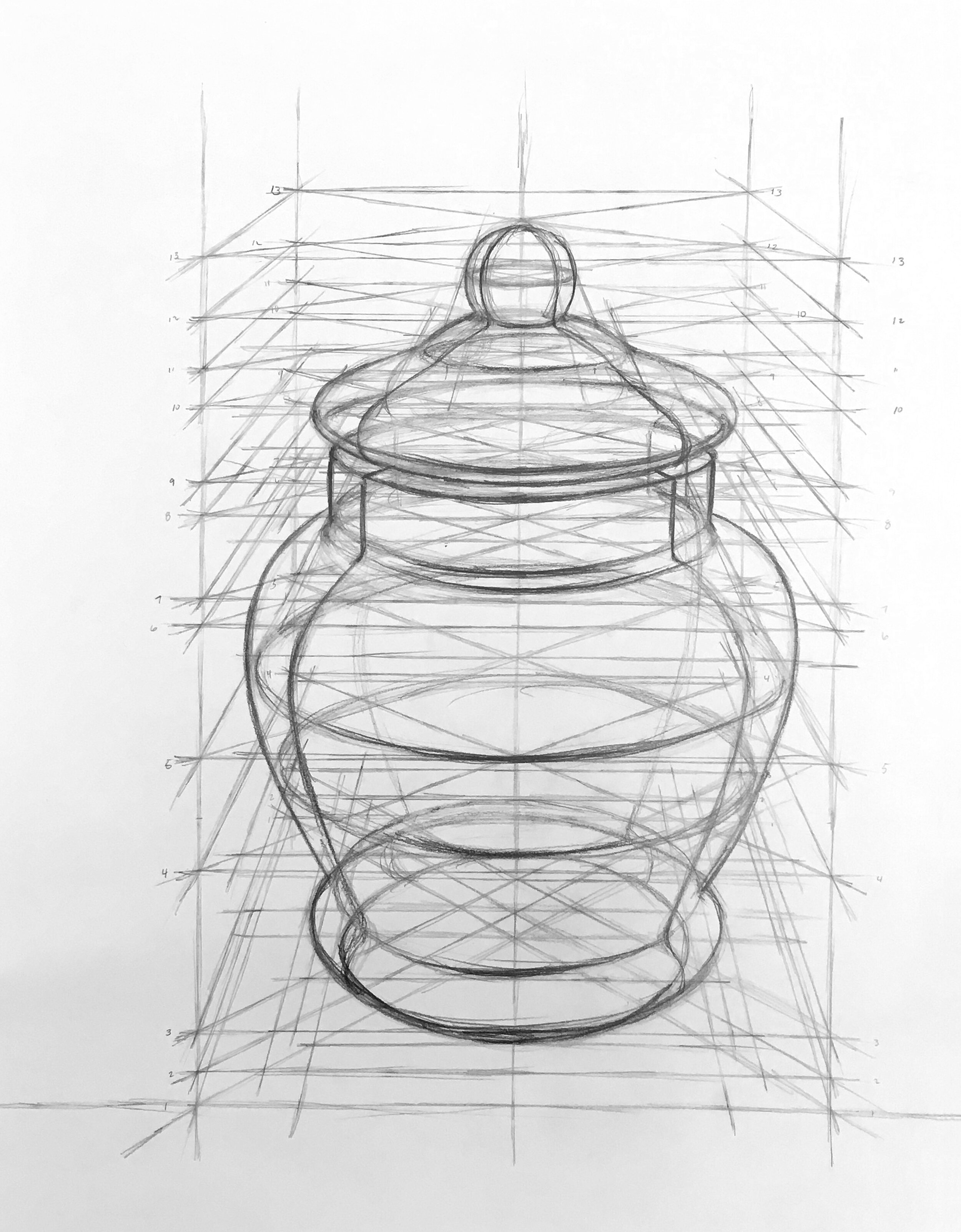

Digital Translation
In order to define the form of the object with shadows, I moved the drawing into the computer. Using the physical object and my line drawing as a reference, I built the skeleton of the jar with the trusty pen tool in Illustrator.
Process






Shadow Painting
After refining my linework and observation of the glass jar, I began indicating the highlights and shadows on the surface of the object with gesture style painting. Changing the thickness of strokes helped to clarify the form of the object.
Process









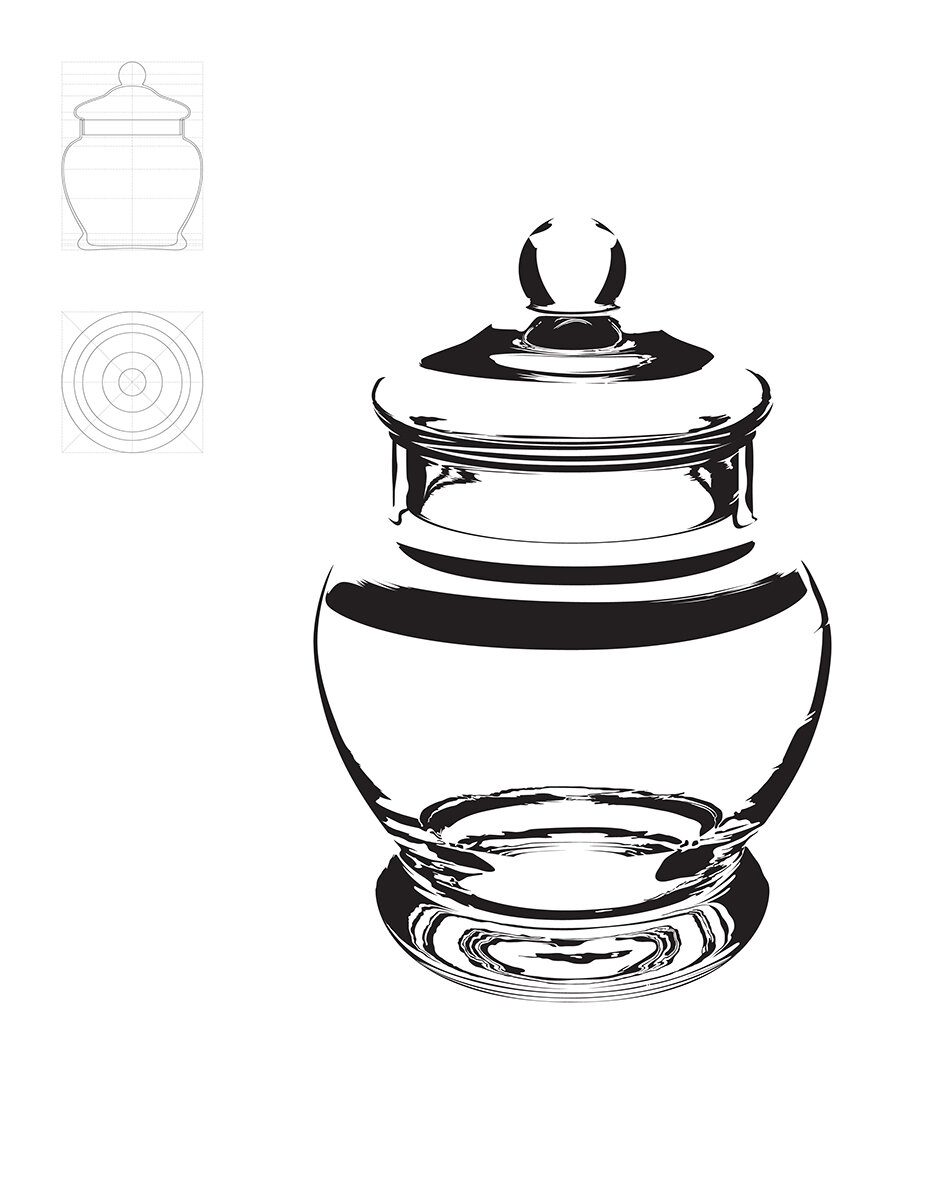
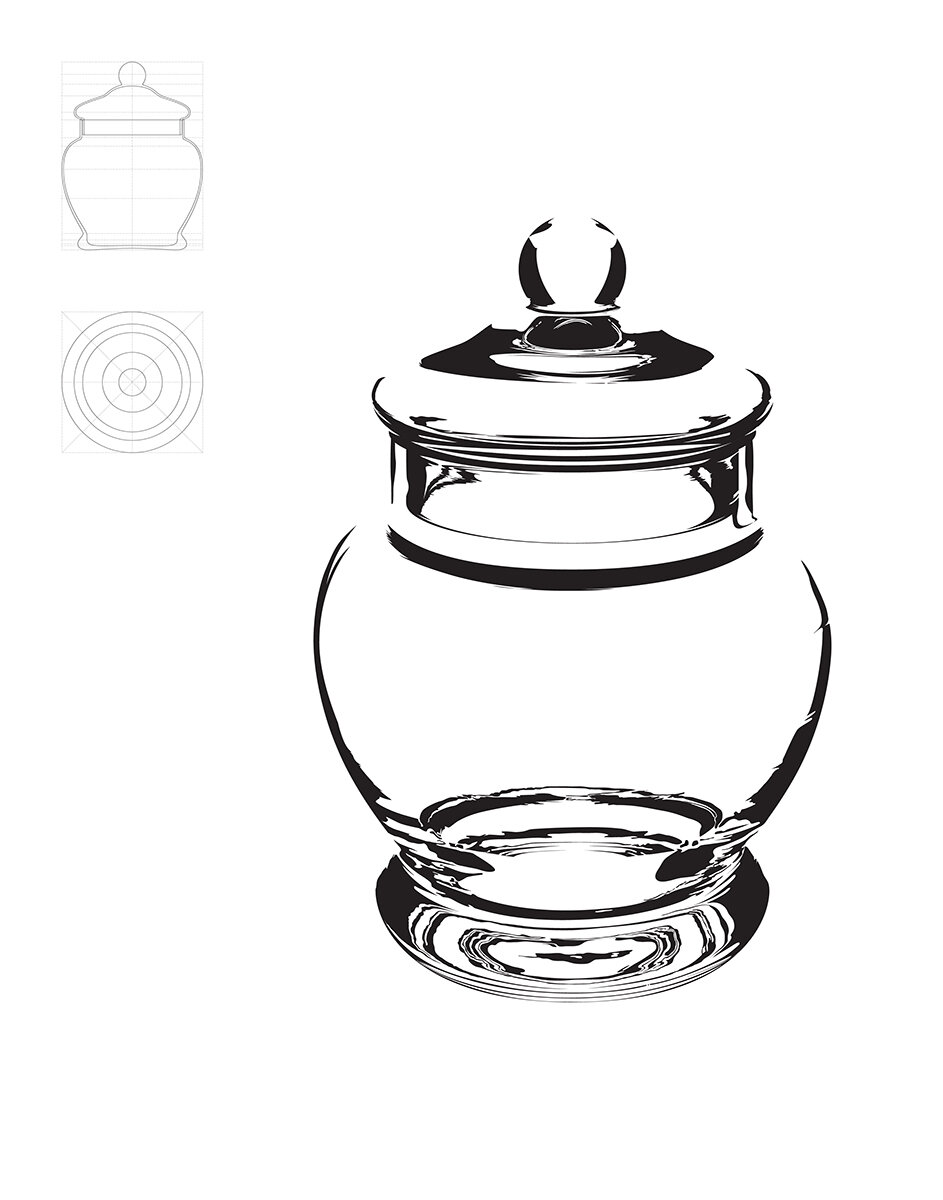
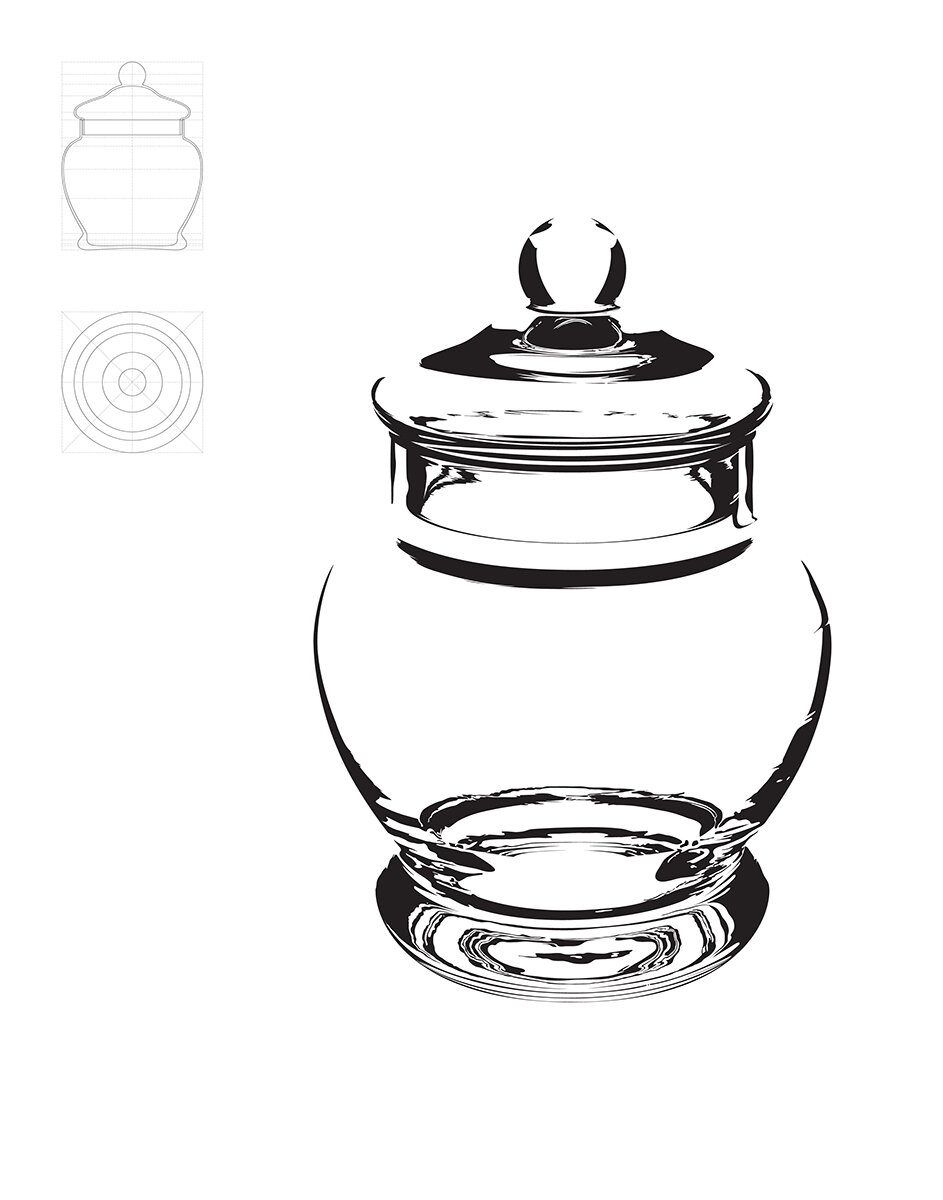
The Method
Before the complex object, I needed to practice understanding perspective and proportion with simpler shapes, starting with a plane and moving to a sphere. At each step, I relied on the experience I had accumulated with the previous exercise. When it came to the complex object, I was able to break it down into simpler shapes.
Plane




Cube




Cylinder
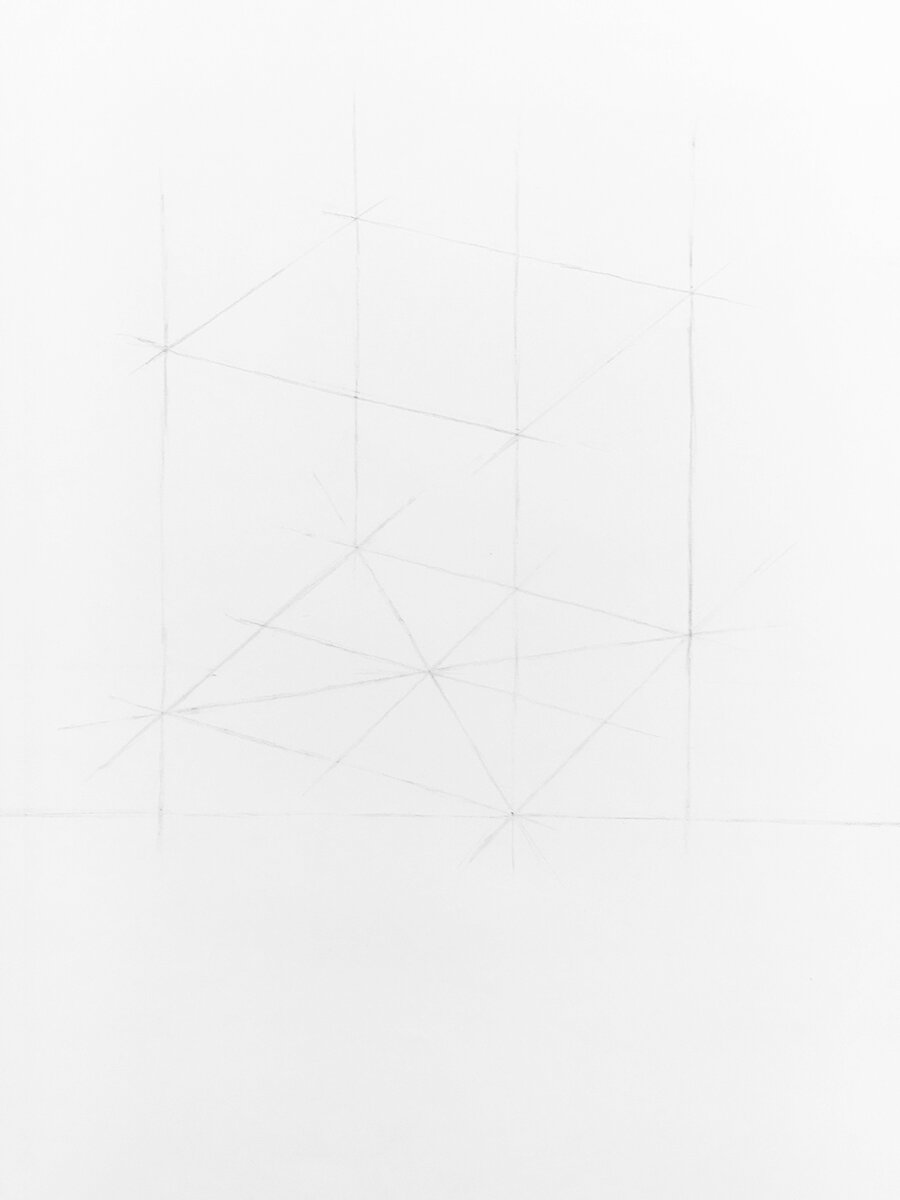
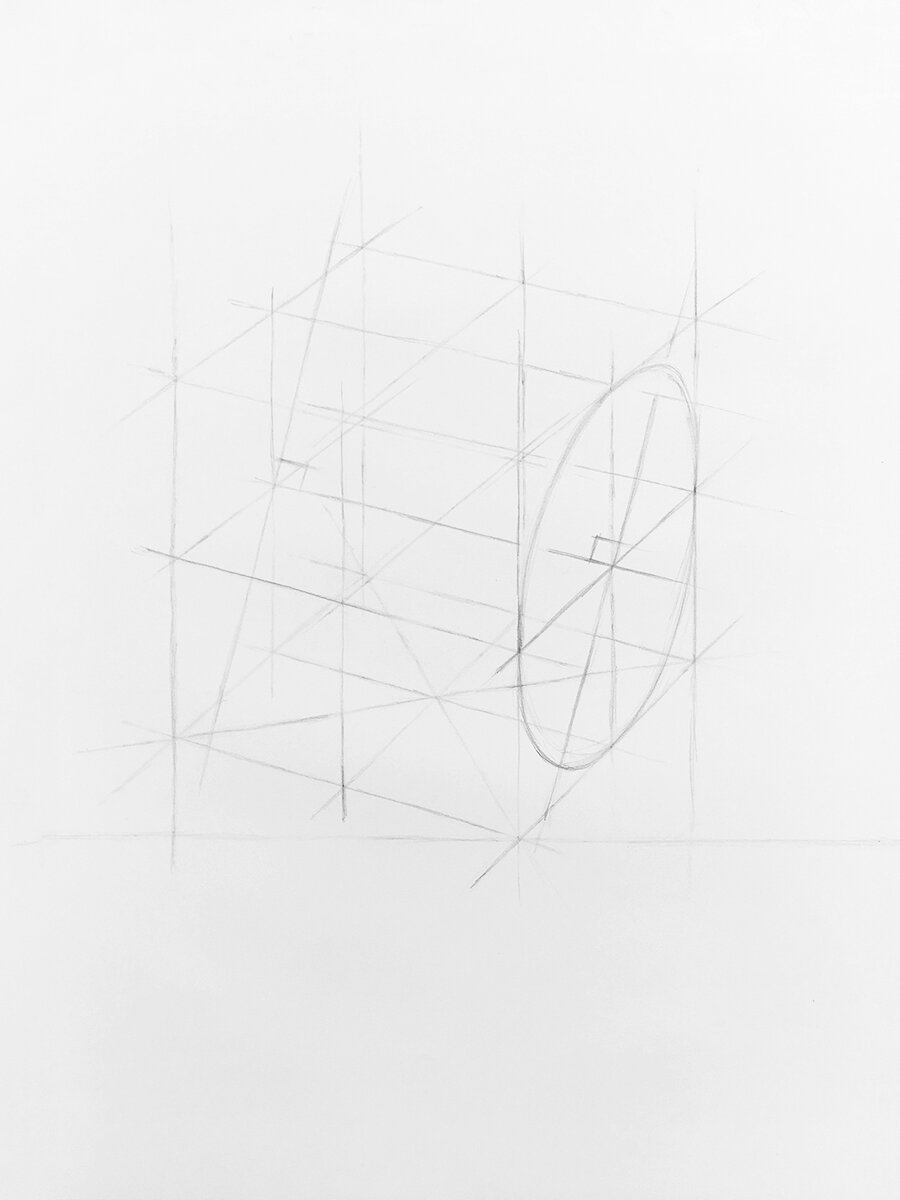
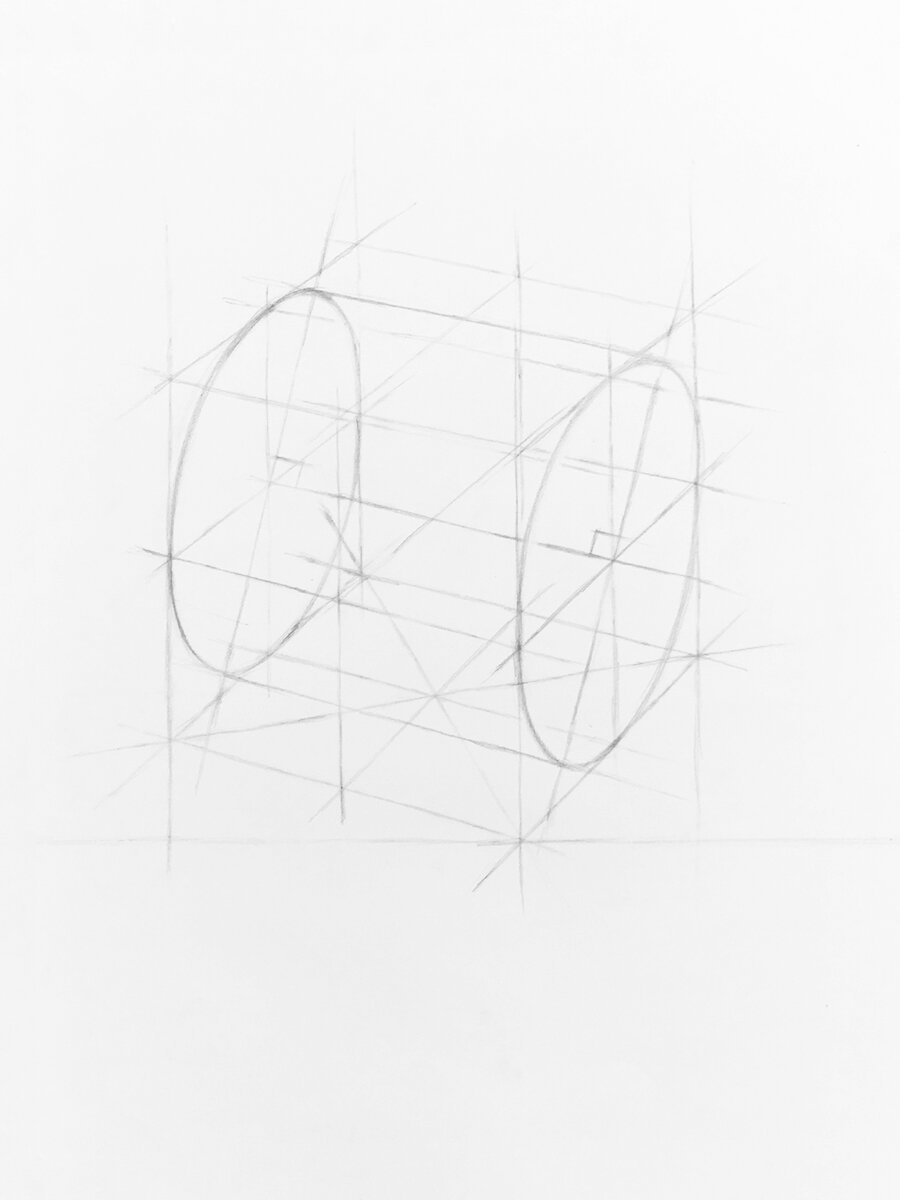

Sphere
